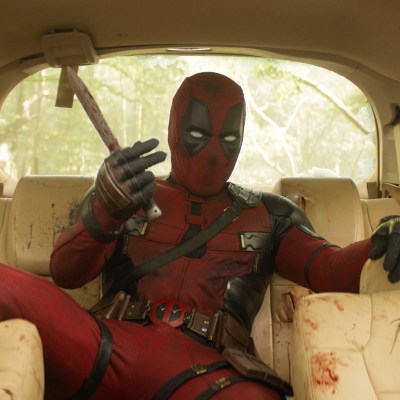How Thor Changed the Marvel Cinematic Universe
A decade after its release, the first Thor movie remains a pivotal moment in the history of the MCU.
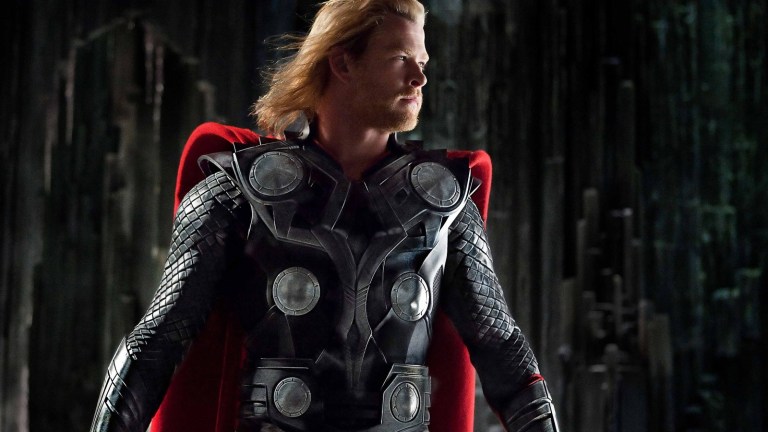
Marvel’s Thor, the first theatrical live-action film to feature the comic book giant’s version of the Norse God of Thunder, opened in theaters a decade ago, on May 6, 2011.
Directed by Kenneth Branagh and starring a then little-known Chris Hemsworth in the title role, Thor was the fourth film in the still-nascent Marvel Cinematic Universe. It was also — as we look back at it now — a pivotal one in the development of the MCU.
“I’m very proud of my part of it,” Branagh told us a couple of years ago about his handling of Thor. “Which was providing a sort of backbone that they could comically riff off, but at least it originally contained some of the high stakes Nine Realms import that that larger mythology has to have as well.”
Thor took the franchise off the Earth for the first time and into the cosmic side of the Marvel mythology, introducing audiences to the Nine Realms, the kingdom of Asgard, and other mind-bending concepts that comic fans had adored for years but which were a major risk to put in front of mainstream moviegoers.
Even the character of Thor — with his helmet and his hammer and his arch way of speaking — often seemed to skate perilously close to laughable in the pages of the comics themselves. But he was also a mainstay of the Marvel line and a charter member of the Avengers, the superhero team that Marvel based its entire initial run of films upon.
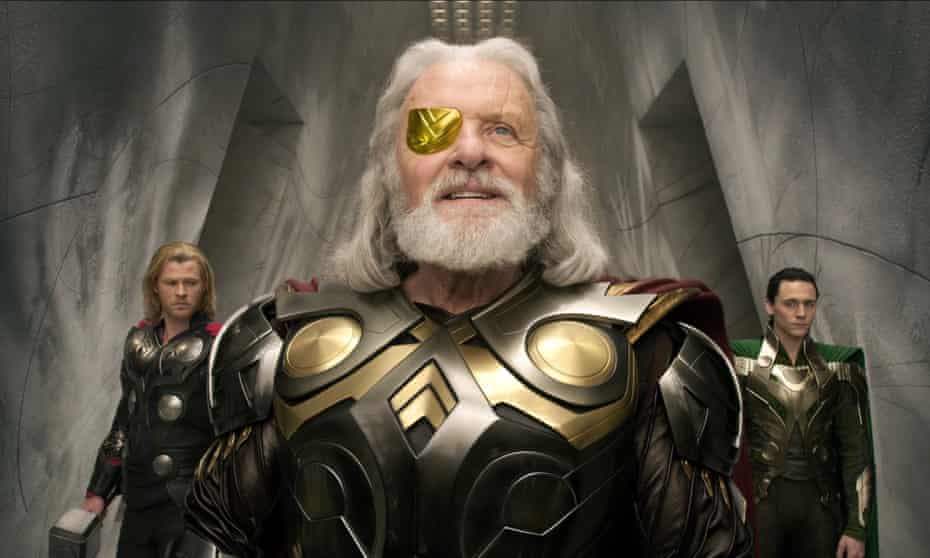
Thor didn’t take the Rainbow Bridge to the screen
A Thor movie based on the Marvel Comics version of the character had, surprisingly, been bandied around for years even before there was a Marvel Cinematic Universe.
The God of Thunder debuted on the page in Journey into Mystery #83 (August 1962), created by Stan Lee, Larry Lieber, and Jack Kirby. He later joined Iron Man, the Hulk, Ant-Man, and the Wasp in the pages of The Avengers #1 (September 1963). In the ensuing decades, he has starred in multiple iterations of the Avengers comics, plus many ongoing and limited series of his own.
An animated version of the character debuted in 1966’s Marvel Super-Friends show, while the first live-action incarnation of Thor (played by Eric Kramer) showed up in the 1988 TV movie The Incredible Hulk Returns, a follow-up to the late 1970s series The Incredible Hulk.
While Thor continued to turn up in various animated Marvel properties, it was in 1991 that the first full-length, live-action Thor movie was proposed — by no less than Sam Raimi.
The director, who later went on to make the first three Spider-Man movies and who is now working in the MCU on Doctor Strange in the Multiverse of Madness, revealed to the The Hollywood Reporter in the wake of Stan Lee’s passing that he pitched a Thor movie to the Marvel Universe co-creator over lunch.
“We worked together writing treatments and took it to Fox and pitched it,” Raimi recalled. “And they said, ‘Absolutely no. Comic books don’t make good movies.’ This was in 1991.”
The rights to Thor bounced around Hollywood for a few more years (at one point it was set up at Sony with David S. Goyer writing and possibly directing) until landing back at Marvel Studios, which had reinvented itself as an independently financed production company in 2005 with distribution through Paramount Pictures. The studio, run at the time by David Maisel with Kevin Feige as president of production, hired Mark Protosevich (I Am Legend and the unfilmed Batman Unchained) to write a script for Thor, with Matthew Vaughn (X-Men: First Class) coming aboard to direct in August 2007.

Enter Tom Hiddleston as Loki…
No sooner did Matthew Vaughn sign up to direct Thor than he seemingly left just as quickly, although it was officially announced in May 2008 that he was departing. Creative and budget issues seemed to have sealed his exit. “Marvel loves the script,” he wrote in The Guardian in late 2007. “The only problem is that it has been costed at $300m and they ask how I am going to reduce it by $150m.”
Even though Thor had already been scheduled for a June 4, 2010 release date, Marvel still had to find a director. Talks were held with Guillermo del Toro, but he decided to direct The Hobbit instead (which he ended up leaving as well). At the end of its search, Marvel finally chose Kenneth Branagh, the Irish actor and director best known for his epic adaptations of Shakespeare’s Hamlet and Henry V — which kind of provided an idea of the tone Marvel was looking for.
Branagh was finally signed in December 2008, telling MTV News, “It’s a chance to tell a big story on a big scale…It’s a human story right in the center of a big epic scenario.”
Once Branagh was signed, the movie’s release date was pushed back from June/July 2010 to May 6, 2011, providing plenty of time for the film’s extensive visual effects to be designed and created and for Branagh to find his cast — starting with the God of Thunder himself.
The first person allegedly approached was Daniel Craig, who had just starred in his second James Bond film, Quantum of Solace. It was because of his commitments to the already massive 007 franchise that Craig turned down the hammer-wielding Asgardian, although it’s somehow hard to imagine the tough-as-nails Craig as the egotistical (at least at first), young Odinson.
A long list of young, relatively unknown actors tested for the part, including Chris Hemsworth (who was just making his brief but scene-stealing appearance as James Kirk’s father in J.J. Abrams’ Star Trek), his brother Liam, the equally obscure Tom Hiddleston, Kevin McKidd from Grey’s Anatomy, Alexander Skarsgard (Godzilla vs. Kong), Charlie Hunnam (Sons of Anarchy), Joel Kinnaman (The Suicide Squad), and others. But Chris Hemsworth ultimately won the day, with Hiddleston landing the consolation gift that would keep on giving, the role of Thor’s villainous adopted brother Loki.
“That was my starting point, was that you have a character with a predisposition toward mischief,” Hiddleston said about playing the trickster god, during a 2010 set visit attended by this reporter in Manhattan Beach, California. “An inclination toward chaos and a delight in imbalance, and you couple that with the fierce intelligence that he has, and a chess master’s ability to manipulate events three or four steps ahead of the game.”
Adding even more gravitas to the production was the signing of the legendary Anthony Hopkins to play Thor’s father, Odin, along with Natalie Portman as Jane Foster, Rene Russo as Thor’s mom Frigga, Colm Feore as Laufey, the king of the Frost Giants, Idris Elba as Heimdall, and others. Also signed: Samuel L. Jackson for his third appearance as Nick Fury (in an end credits bonus scene) and Jeremy Renner as Clint Barton/Hawkeye, marking the live-action debut of the bow-and-arrow-wielding Avenger.
Filming on Thor began in mid-January 2010 and wound down in early May, with shooting taking place at Raleigh Studios in Manhattan Beach, California (Marvel’s studio home in the MCU’s early years), Santa Fe, and other parts of New Mexico, and locations in northern California.
Colm Feore told The Deadbolt that the Shakespearean training which he, Branagh, and Hopkins all shared enabled them to quickly communicate with each other while shaping the characters and finding the right tone: “One of the things that was enormously helpful on Thor was that during the breaks, Tony, myself, and Ken would be talking in Shakespearean shorthand about what the characters were doing, what we thought they may be like, and how we could focus our attention more intelligently.”
During that same set visit to the Manhattan Beach set of Thor, Marvel president of production Kevin Feige told this reporter and others that the movie was going to feature more extensive post-production work than other Marvel films. “When you walk around Captain America or Iron Man, you can get it,” he explained. “With Thor, what you’re seeing is only 30% of what the movie will be. This is the big question mark and to me that makes it the most exciting. I like it when people don’t exactly know what we’re going to do.”
Reshoots were completed in late 2010, while The Avengers director Joss Whedon shot the end credits scene in which Nick Fury reveals the Infinity Stone known as the Tesseract to Dr. Erik Selvig (Stellan Skarsgard).
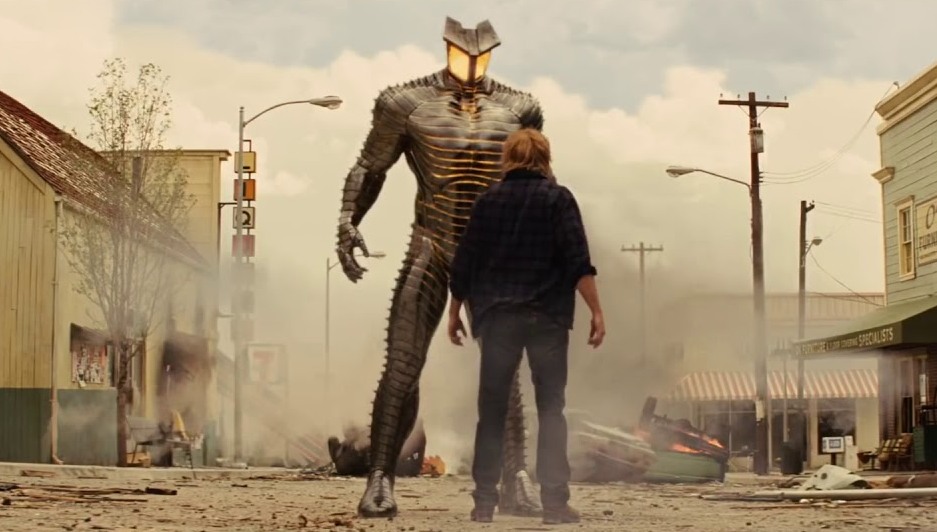
Marvel takes a big swing with Thor’s hammer
Introducing Thor and the Asgardians — who were essentially aliens, with technology so far ahead of our own that they seemed like gods to the ancient, more primitive people of Norway more than a millennium ago — was a major gamble for the MCU and Feige.
Out of Marvel’s first three films, Iron Man and Iron Man 2 were massive, out-of-the-box hits, while The Incredible Hulk was a middling success at best. Yet all three films were Earthbound and dealt with plausible (as far as it went) science and technology. The science of Thor was — to borrow a phrase from the late science fiction titan Arthur C. Clarke — indistinguishable from magic.
“Asgardians are kind of ‘been there, done that’ when it comes to that kind of stuff,” said co-producer Craig Kyle to this reporter and others on the set visit. “For them to send you across the universe, it’s as easy as turning a key … Their technology is only as sophisticated as it needs to be to do extraordinary things.”
Making Thor, Odin, and the other inhabitants of Asgard, Jotunheim, and the rest of the Nine Realms into extra-terrestrial beings mistaken for gods by ancient humans took Thor away from sword-and-sorcery and fantasy and more overtly into the science fiction genre. But it also provided the film with a back story and mythology that was perhaps easier for modern movie fans to swallow — more Star Wars than the Völuspá.
“We just kept trying to humanize it all, and keep it very real,” Chris Hemsworth told Superhero Hype at the time about his approach to the title character. “Look into all the research about the comic books that we could, but also bring it back to ‘Who is this guy as a person, and what’s his relationship with people in the individual scenes?’ And working with someone like Kenneth Branagh, who has all those bases covered and has so many ideas, it was a hell of a time!”
In addition to taking the big creative risk of bringing Asgard and Thor to the screen, the movie took several other chances as well. Starting a tradition that Marvel would return to with films like Captain Marvel and Guardians of the Galaxy, Thor did not function as a traditional origin story. We meet Thor, Loki, Odin, and enter Asgard with only a brief introduction detailing the history of ill will and war between the Asgardians and the Frost Giants.
Thor’s journey in the film is not that of an ordinary character being bestowed with great powers and learning how to use them, the typical arc of a superhero film. He is fully formed here, if flawed, and as the film progresses he learns to be a better version of the immensely powerful being that he already is — with the help of the human beings that he meets during his fall to Earth.
When Thor — the likely successor to his father’s throne — reignites hostilities with the Frost Giants partially due to his own immaturity, Odin decrees him unworthy of wielding Mjolnir and banishes him, powerless, to Earth. That leaves the door open for the crafty Loki — who has discovered that he is not Asgardian after all, but the child of Frost Giants — to manipulate and scheme his way into power himself.
Marvel’s other big gamble was making Loki a much more fully developed antagonist than had been previously seen in many comic book movies. Skillfully portrayed by Hiddleston in a performance that made him an instant star, Loki is an empathetic, nuanced character whose longing for the love and attention of his adopted father — who lavishes more of both on Thor — leads him down a dark path and into a character arc that would take several years and movies to play out.
“I think Loki intuitively feels that he doesn’t belong there, he doesn’t belong with the family in Asgard and doesn’t belong in the pantheon of gods,” said Hiddleston at the time. “He’s confused about his place in the universe … We all reach a point in our lives where we think, ‘What the hell are we supposed to do with our life?’ Thor reaches that point in this film and Loki does as well, so yes, maybe if Odin had made him feel valued and respected and essential to Asgard, then it would have been okay.”
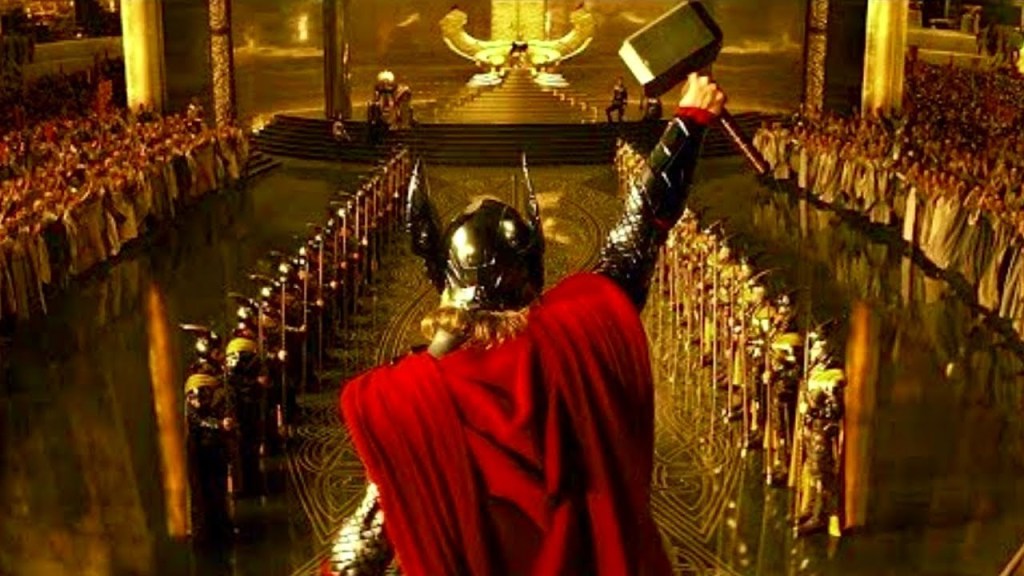
Thor smashes all preconceptions
Thor had its world premiere in Sydney, Australia on April 17, 2011 and opened in that country — Hemsworth’s native land — four days later. It premiered in 56 more markets before finally opening in North America on May 6, 2011.
The film earned a 77% fresh rating and mixed reviews on Rotten Tomatoes, with critics praising the performances by Hemsworth and Hiddleston, as well as the grandiose family drama on Asgard, but less impressed by Thor’s journey to Earth and the climactic battle there against the massive golem-like Destroyer sent by Loki to kill Thor.
More importantly for Marvel, the film connected with audiences despite the perception that Thor was largely unfamiliar or dated. Thor earned $181 million at the North American box office and a further $268 million abroad for a worldwide total of $449 million.
While that ranks it near the bottom of the 23 MCU movies released to date (along with Ant-Man and Captain America: The First Avenger), it was a far from shabby showing for the early MCU and proved Marvel’s calculation that it could expand Marvel’s footprint on film beyond already established characters like Spider-Man, the X-Men, and the Hulk.
“I liked it when people said, ‘Iron Man’s the B-Team. You’re calling out the B-Team!’ We knew it wasn’t,” said Feige on set about using what were perceived as lower-tier Marvel heroes. “We knew it was going to be great. And that holds true for Thor … here’s another one that will redefine us and at least raise the bar of what a comic book movie is, for both people who’ve read comics and those who haven’t.”
Thor expanded the boundaries of the MCU into the realms of space, alternate dimensions, and cosmic conflicts, while putting another key part in place for the impending arrival of the Avengers. And while 2013’s follow-up, Thor: The Dark World, was a misstep and considered one of Marvel’s few outright failures, the studio brilliantly reinvented the character in 2017 with Taika Waititi’s Thor: Ragnarok, moving him away from the initial Shakespearean grandiosity and into a more humorous space.
That in turn allowed Thor and Hemsworth to have one of the most profound character arcs across the entire span of Avengers: Infinity War and Avengers: Endgame. His story in those films, the box office clout of Ragnarok, and Hemsworth’s enthusiasm for the role led Marvel to commission 2022’s Thor: Love and Thunder — marking the first time an MCU hero is venturing into a fourth solo movie.
Ten years later, while not a perfect film by any means, Thor is still an enjoyable, consciously weird Marvel epic that proved the God of Thunder could bring the lightning even to modern audiences. And while Thor has seemingly abandoned the throne of Asgard for now, his first film’s place in the MCU pantheon is secure.

